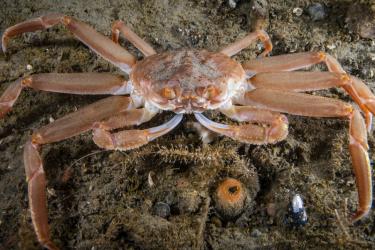The first of two initial 3-day directed commercial halibut fishery openers in federal waters off the West Coast for the 2025 season begins next week. The first opener starts on Tuesday, June 24 at 8 a.m. and ends on Thursday, June 26 at 6 p.m. The second opener starts on Tuesday, July 8 at 8 a.m. and ends on Thursday, July 10 at 6 p.m.
The allocation for the 2025 Area 2A fishery is 259,515 pounds (118 metric tons), net weight. If a third fishing period is needed to reach the allocation, it would occur 2 weeks after the closing of the second fishing period.
NOAA’s Office of Law Enforcement, along with our state and federal enforcement partners, will be out on the water and at the docks. We will be conducting patrols throughout the season. Patrols will focus on ensuring compliance with the rules and regulations governing directed commercial halibut fishing.
These include:
- Proper marking of fishing gear
- Permitting and vessel documentation
- Opener start and stop times
- Area restrictions
- Minimum size, possession restrictions, and discard requirements
All setline or skate marker buoys carried on board, or used by any U.S. vessel for halibut fishing, must be marked with either the vessel’s state license number or registration number. The markings must be in legible characters at least 4 inches high and one-half inch wide in a contrasting color visible above the water.
Any fishery closure, reopening, or change will be announced on the NOAA Fisheries hotline at (206) 526-6667 or (800) 662-9825 (option 7).
Regulations and information:
- Pacific Halibut Fishing on the West Coast
- International Pacific Halibut Commission Fishery IPHC commercial halibut fishing regulations
Our partners in these patrols include:
- U.S. Coast Guard
- Washington Department of Fish and Wildlife Police
- Oregon State Police
- California Department of Fish and Wildlife
NOAA encourages anyone with information about suspected marine natural resource violations to contact NOAA’s Office of Law Enforcement Hotline at (800) 853-1964. Tips may be left anonymously. Rewards may be offered for information that leads to an arrest, conviction, civil penalty assessment, or forfeiture of property for violation(s) of the laws and regulations NOAA enforces.
Protecting Seabirds
Fishermen, scientists, and policymakers have worked hard to prevent the inadvertent death of migratory seabirds. In addition to the rules and regulations above, groundfish long-line vessels are required to deploy seabird avoidance gear when fishing for Pacific halibut. This regulation only applies to vessels landing groundfish along with halibut. Streamer lines are the most common form of seabird avoidance gear and are used to prevent bird attacks on baited hooks. Commercial bottom longline vessels that retain both groundfish and Pacific halibut (incidental commercial catch) must comply with seabird bycatch minimization measures
How U.S. Fisheries are reducing albatross bycatch
Properly Releasing Halibut
Halibut that are not retained must be released outboard of the roller and returned to the water with a minimum of injury using one of these methods:
- Straightening the hook
- Cutting the gangion near the hook
- Removing the hook with a gaff by carefully twisting it from the halibut
These safe release measures promote the survival of released halibut and help to support a sustainable fishery.
Recreational and Charter Halibut Fisheries
Annual federal and state enforcement efforts for the Area 2A halibut fisheries also include inspecting recreational charter boats targeting Pacific halibut. These inspections verify a valid NOAA-issued permit was obtained at least 15 days prior to their first fishing trip. They also verify compliance with other applicable federal and state regulatory requirements. Vessels fishing under a directed commercial license are prohibited from fishing recreationally for Pacific halibut in the same International Pacific Halibut Commission Regulatory Area.


